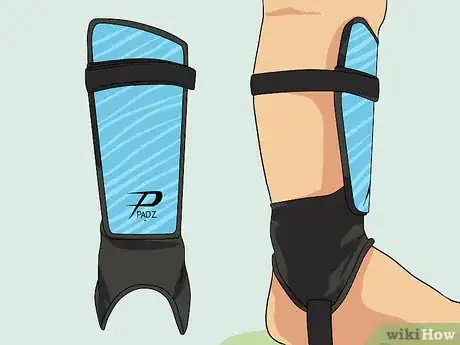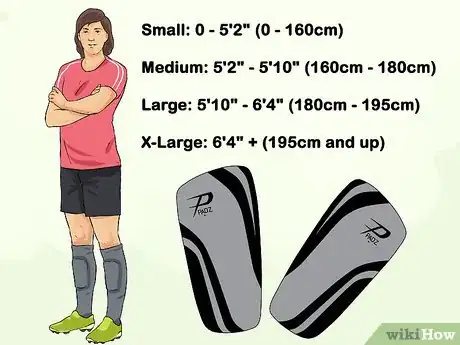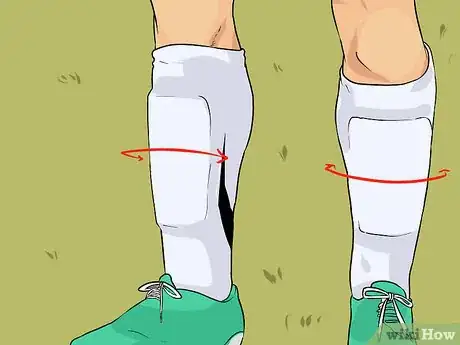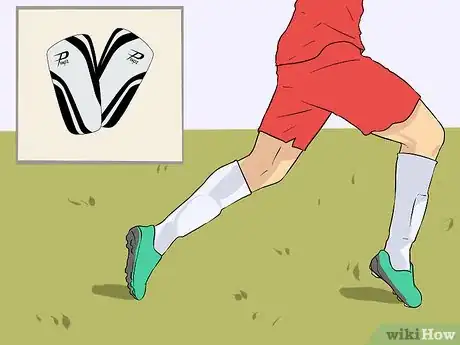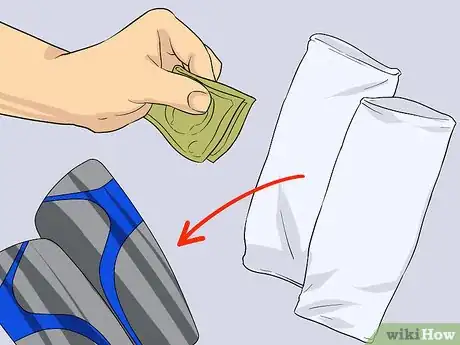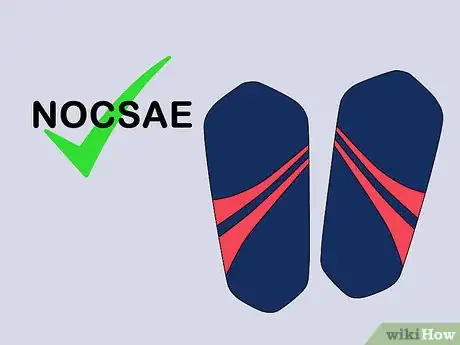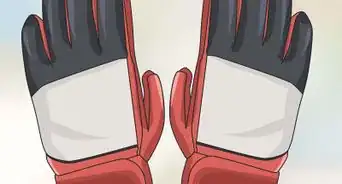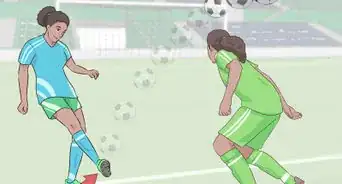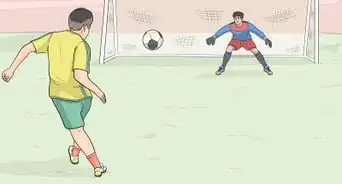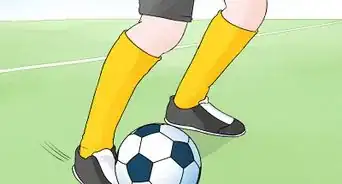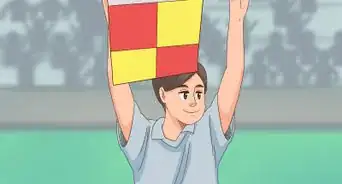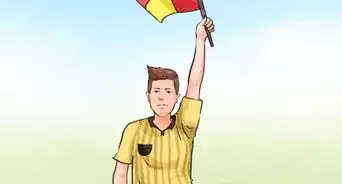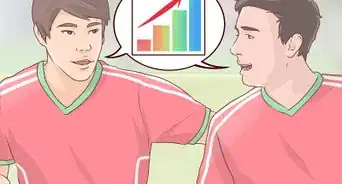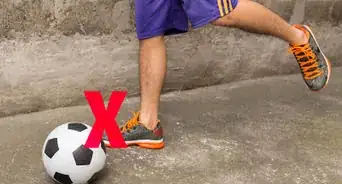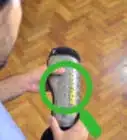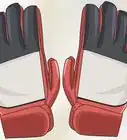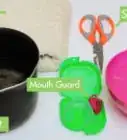X
This article was co-authored by wikiHow Staff. Our trained team of editors and researchers validate articles for accuracy and comprehensiveness. wikiHow's Content Management Team carefully monitors the work from our editorial staff to ensure that each article is backed by trusted research and meets our high quality standards.
This article has been viewed 94,479 times.
Learn more...
Shin guards are the only required piece of protection in soccer. They are essential for any game and protect you from kicks, hard shots, and fouls. When buying them, you want to look for two things: a large protection area and comfort while running.
Steps
Method 1
Method 1 of 2:
Sizing Guards Appropriately
-
1Choose shin guards with attached ankle protection for players 12 years old and under. There are two basic types of shin guards. One type has attached ankle straps, which wrap under the foot and provides support and ankle protection. The other type simply slides under your socks and protect just your shins. For players under 12 the added ankle support is crucial for safety and comfort.[1]
- Currently, there are some hybrid guards that come down to cover the ankle but don't actually wrap around it. These tend to be more expensive, however, as they need a very precise fit.
-
2Consider slide-in shin guards for older players. As players grow more serious about soccer, they tend to find the ankle-guards too bulky, as they can limit your foot's range of motion. By ages 10-12, many youth players switch to slide-ins, which you simply push under the socks. They do not cover your ankles. While slightly less protective, the added speed is essential for higher levels of competition.Advertisement
-
3Size shin guards based on your height. Shin guards come in the standard sizes from x-small all the way to XL, but just because you wear a large jersey doesn't mean you need a large guard. For the most part, let height be your guide:
- Small: 0 - 5'2" (0 - 160cm)
- Medium: 5'2" - 5'10" (160cm - 180cm)
- Large: 5'10" - 6'4" (180cm - 195cm)
- X-Large: 6'4" + (195cm and up)
-
4Ensure the guard protects a few inches under the knee to just above the ankle. While the guide above is best for 90% of players, everyone is different. As a rule of thumb, you want the guard to cover from below the knee to right before your ankle bends.
-
5Get a guard that comfortably molds to the width of your leg. Professional players actually have guards that are custom-molded to their shins. While this is overkill for youth soccer, the basic idea is a good one -- you want snug, complete protection around your shins. When looking at your legs from the front, the shinguard should cover the entire width of your leg.
- Most shin guards can be lightly bent with your fingers to curve them to your leg. Do not yank on them, however, as this can cause them to weaken.[2]
-
6Try on shin guards with a soccer sock before buying. The best way to buy guards is to see what feels comfortable. When going to the store, bring a pair of long soccer socks with you. Slide the guards on and walk around a bit, even jogging if possible, and see if they stay snugly in place. They should be comfortable and cover the majority of your leg.
Advertisement
Method 2
Method 2 of 2:
Getting the Best Guards
-
1Get a bigger, bulkier shinguard as a defender. When you're back protecting the box you're getting a lot more action coming at you, from hard shots to attacking players. As such, defenders tend to prefer something with a bit more protection than a striker. For youth defenders, it's not a bad idea to keep using ankle guards or something with ankle protection.[3]
-
2Look for lighter, faster guards for forwards and midfielders. When you're sprinting at the goal, you want something small that in no way limits your mobility. If there is any difference between strikers and midfielders, it is that forwards and strikers sometimes opt for added ankle protection, like longer shin guards, to protect against tackling defenders.
-
3Get light, minimal-protection guards as a goalie. The last thing you want to do in net is keep adjusting or worrying about your guards. Since they're generally much less needed in the box, keepers tend to get the smallest guards they can get away with.
-
4Get plastic shin guards for the best price and carbon fiber for the best protection. These are the two most common shin guard materials. Both will work great, but depending on your needs as a player one may be better than the other. Plastic is generally most budget-friendly for less serious players, whereas carbon fiber is both lighter and stronger for high-level play.
- Carbon fiber is recognizable by the distinctive "cross-hatching" pattern it has, where the materially looks like a tightly woven basket.
-
5Buy a sleeve or straps to keep shin guards in place all game long. No player wants to constantly look down and readjust their shin guards. If you're wearing slide-ins, you may want a thin, breathable sleeve that slides on under your socks. You can then slide the shin guard into the sleeve, pulling the sock over both. Some players prefer simple Velcro straps, as well, which can go above or underneath your sock.
- In a pinch, athletic wrapped above and below the shin guard and sock can keep them in place all game long.
-
6Purchase NOCSAE approved guards if you're playing for middle or high school soccer teams. The National Operating Committee on Standards for Athletic Equipment, NOCSAE, must approve all US high school shin guards. This is only true for games through your actual school, not for high-school aged players on other teams. There should be a NOCSAE seal or stamp on the shin guard or attached tag.
- All NOCSAE approved guards will be clearly labeled on the packaging when you go shopping. No stamp, no approval.
Advertisement
Community Q&A
-
QuestionWhat size shin pads do I need for an 11-year-old boy?
 Community AnswerUsually medium, but you should have him try them on, because everyone is different. Make sure they fit around the ankle and with soccer socks on, and make sure they don't move.
Community AnswerUsually medium, but you should have him try them on, because everyone is different. Make sure they fit around the ankle and with soccer socks on, and make sure they don't move.
Advertisement
References
About This Article
Advertisement
